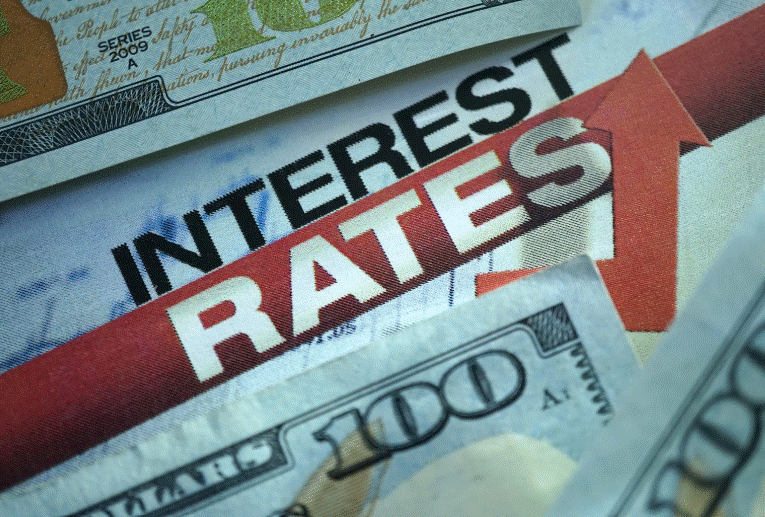Interest rates play a crucial role in the housing market, influencing everything from home affordability to buyer demand. When interest rates fluctuate—whether they rise or fall—they have a direct impact on both buyers and sellers. For those looking to buy or sell a home, understanding how these rate changes can affect the market is essential for making informed decisions.
In this blog post, we’ll explore how interest rate fluctuations affect the housing market, from the way buyers and sellers react to the broader market dynamics. By understanding these effects, both buyers and sellers can better navigate the housing market, whether they are purchasing a first home, looking to sell, or seeking an investment property.
The Basics of Interest Rates and the Housing Market
At its core, an interest rate is the cost of borrowing money, typically expressed as a percentage of the loan amount. When a borrower takes out a mortgage, the interest rate determines how much they will pay in addition to the principal amount borrowed. Interest rates are set by central banks, such as the Federal Reserve in the U.S., and they fluctuate based on a variety of economic factors, including inflation, economic growth, and monetary policy.
For homebuyers, the interest rate directly impacts the cost of their mortgage. A lower interest rate means they will pay less in interest over the life of the loan, which can make homeownership more affordable. Conversely, when interest rates rise, the cost of borrowing increases, potentially making homeownership more expensive.
For sellers, interest rate changes can influence the level of demand for homes. Higher interest rates can lead to fewer buyers in the market, while lower rates may encourage more people to purchase homes.
How Buyers React to Changing Interest Rates
The interest rate environment is one of the first factors homebuyers consider when deciding whether to purchase a home. When interest rates are low, buyers often feel more confident about entering the market because their monthly mortgage payments will be lower. As a result, demand for homes typically increases during periods of low interest rates.
On the other hand, when interest rates rise, buyers may become more cautious. Higher rates increase the cost of borrowing, meaning buyers may need to adjust their budgets to accommodate higher mortgage payments. For some buyers, this can mean settling for a less expensive home, delaying their purchase, or even deciding to rent instead.
How Sellers React to Changing Interest Rates
For sellers, interest rate fluctuations can have a significant impact on the speed and price at which their homes sell. When interest rates are low, more buyers are willing and able to purchase homes, which can create a seller’s market. In a seller’s market, homes tend to sell quickly, and sellers may be able to command higher prices due to increased competition among buyers.
However, when interest rates rise, the opposite can occur. Higher rates can reduce the pool of potential buyers, leading to longer listing times and fewer offers. Sellers may need to adjust their expectations and be willing to negotiate on price to attract buyers. In some cases, sellers may even decide to delay selling until the market becomes more favorable.
The Impact of Rising Interest Rates on Home Affordability
One of the most significant effects of rising interest rates is on home affordability. When interest rates increase, monthly mortgage payments rise as well. For example, a 1% increase in the interest rate on a $300,000 home loan can result in hundreds of dollars in additional monthly payments.
As rates rise, buyers may need to adjust their expectations, either by reducing the price range of homes they are considering or by increasing the length of the loan term to keep monthly payments manageable. In some cases, buyers may decide to put off their home purchase until rates go back down.
This reduction in affordability can have a cascading effect on the market. Fewer buyers can afford to purchase homes, leading to lower demand and potentially causing home prices to stagnate or even decrease. In some areas, this can lead to a cooling of the housing market, especially in more expensive regions where high-interest rates push homeownership out of reach for many buyers.
The Impact of Falling Interest Rates on Home Affordability
Conversely, falling interest rates tend to make homeownership more affordable. When rates decrease, buyers are able to borrow more money for the same monthly payment. This increases the purchasing power of homebuyers, allowing them to afford more expensive homes or secure better loan terms.
For sellers, falling interest rates can stimulate demand and create a more competitive market. As buyers can afford more expensive homes, sellers may see increased interest in their properties, resulting in quicker sales and potentially higher prices.
Falling rates can also encourage existing homeowners to refinance their mortgages, which can free up additional funds for home improvement projects, investments, or savings. This creates more activity in the housing market, as homeowners may decide to buy new homes or make other significant financial moves.
The Impact of Interest Rates on Housing Inventory
Interest rates also influence housing inventory, or the number of homes available for sale. When interest rates rise, some homeowners may decide to hold off on selling their homes. This can be especially true for homeowners with low-interest-rate mortgages who don’t want to give up their favorable rates by purchasing a new home with a higher rate.
As a result, rising interest rates can lead to a decrease in the overall inventory of homes for sale. With fewer homes available, buyers may find themselves in competition for limited properties, driving prices up in certain markets. However, if interest rates continue to rise over an extended period, this dynamic can lead to a cooling of the market, as both buyers and sellers become less active.
On the other hand, when interest rates fall, homeowners may be more likely to sell, as they can take advantage of lower borrowing costs. This can lead to an increase in housing inventory, providing more options for buyers and potentially leading to a more balanced market.
Interest Rate Expectations and Market Timing
For both buyers and sellers, understanding interest rate trends and expectations is critical for market timing. Buyers looking to purchase a home may choose to enter the market when rates are lower to lock in favorable loan terms. Similarly, sellers may decide to list their homes when rates are low, as this can attract more buyers and potentially lead to a quicker sale at a higher price.
However, predicting the direction of interest rates can be difficult, as they are influenced by a wide range of factors, including inflation, government policies, and global economic conditions. Buyers and sellers alike should monitor economic indicators and consult with mortgage professionals to stay informed about interest rate trends and make decisions based on the most up-to-date information.
In conclusion, interest rate fluctuations play a vital role in shaping the housing market. Whether you are a buyer or a seller, understanding how interest rate changes impact home affordability, market demand, and pricing is essential for making informed decisions. By staying informed about interest rate trends and adjusting your expectations accordingly, you can navigate the housing market more effectively and make choices that align with your financial goals.
For buyers, understanding how interest rates affect purchasing power can help you time your home purchase to maximize affordability. For sellers, being aware of the impact of interest rates on buyer demand can help you strategize your listing price and timing. Regardless of where you are in the process, being aware of interest rate trends can help you make smarter, more informed decisions in the ever-changing housing market.





